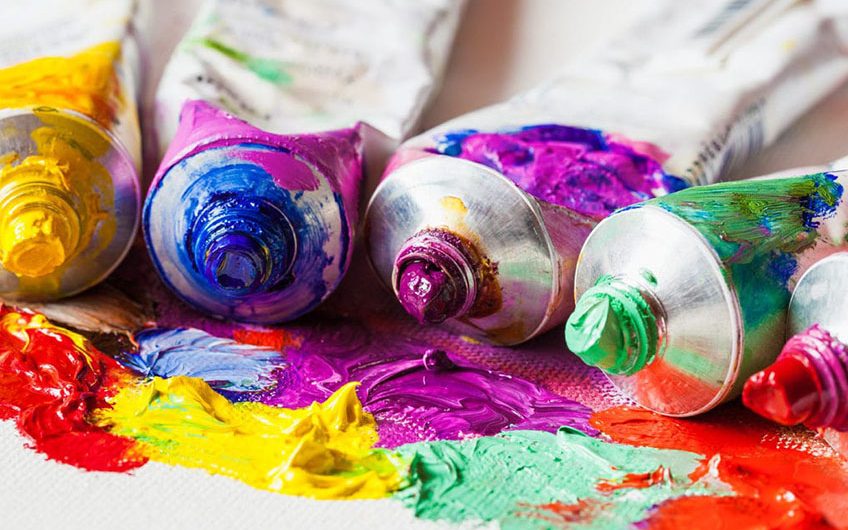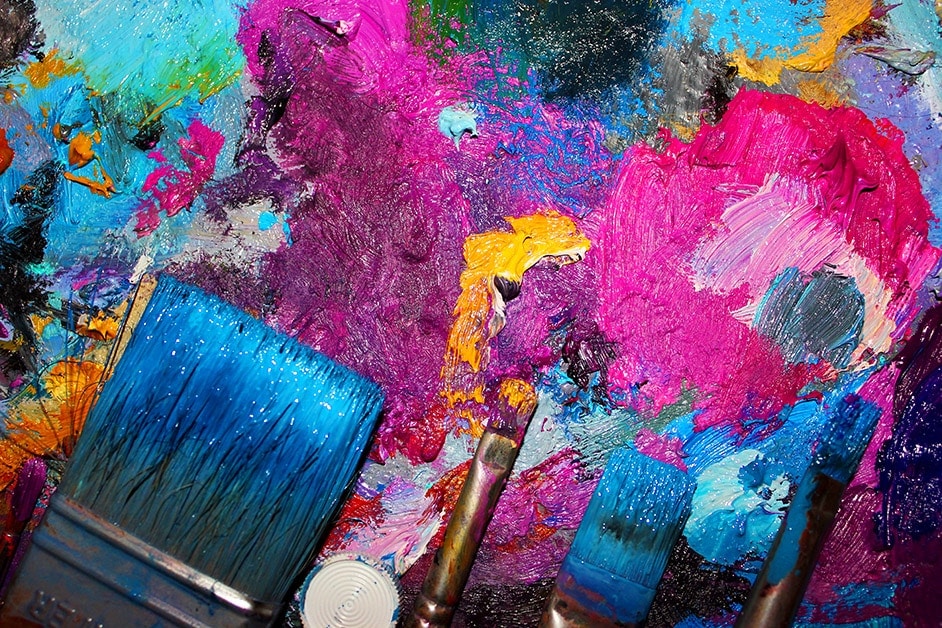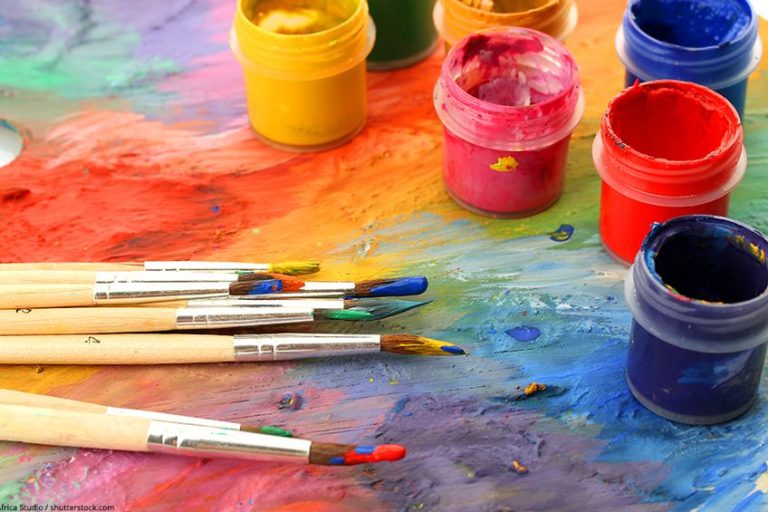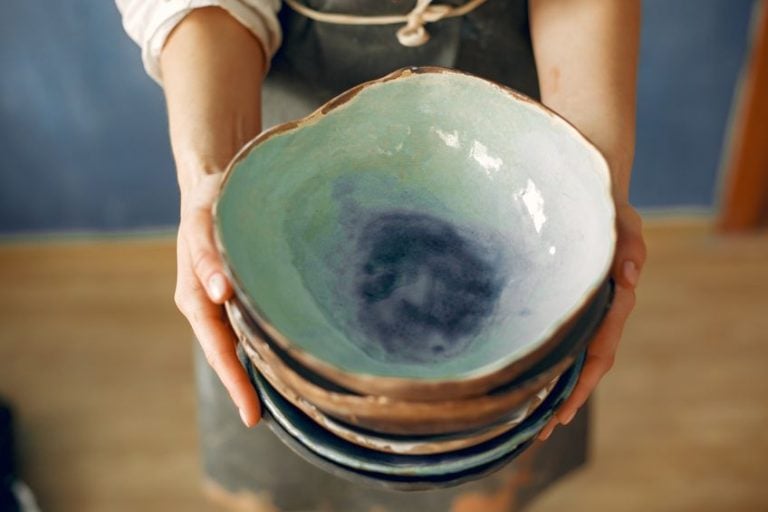Acrylic Painting for Beginners – How to Paint with Acrylics
Expressing your inner world through the medium of painting can be a rewarding and fun process. Acrylic paints are a relatively affordable, forgiving, and versatile medium making them a fantastic option for first-time painters who may be intimidated by the complexities of oil paints. With the right tips and tricks, you can successfully master the brush with acrylic paints and bring your imagination to life.
The Benefits of Acrylic Paints for Beginners
Acrylic paints have several benefits that make them a perfect introductory medium to the world of painting. Faster drying time, versatility, water solubility, and surface adaptability all make this form of paint ideal for those first steps to painting mastery.
Fast Drying Time
The fast-drying time of acrylic paints is probably the most significant departure from oil paints. The quick-drying time means that you can easily paint over previous layers without having to wait a long time. The average drying time for acrylic paints is around 20-30 minutes. Sometimes this short drying time can cause problems with blending your paint on the canvas, but there are several ways in which you can extend the drying time. The simplest option is to use a spray bottle to mist your canvas with water as you paint. The mist of water will help to keep your paint liquid for longer but be sparing with the water as too much can cause your paint to run. You can also buy a product called an extender that you can mix into your acrylic paint, and this will slow down the drying process.
Performance Versatility
The wonderful thing about learning to paint with acrylic is that it is an incredibly versatile medium. You can easily water down the paint thanks to its water-solubility, and this can mimic quite effectively the look and feel of watercolor painting. On the other hand, you can use thicker paint to achieve a similar effect to that of oil paints. When you become comfortable with the medium, there are several different forms of acrylic paint, such as pastes and gels that can be added to the paint to change its consistency, shine, texture, among other things.
Water Solubility
When acrylic paints are wet, they are water soluble. Interestingly, when they are dry, acrylic paints become water resistant. Acrylic paints are made up from color pigments mixed with an acrylic polymer that is water-soluble. The benefits of this water-solubility are that acrylic paints are very easy to clean up. Washing your brushes, wiping up spilled paint, and cleaning your palette are all much easier to do with acrylic paints because they are water-soluble. The water solubility also makes it possible for you to experiment with different techniques by watering it down.
Great for Use on Many Surfaces
The most typical surface for painting, in general, is a stretched canvas, but the wonderful thing about acrylic is that you can use it on many different and exciting surfaces. With acrylic paints, you can paint on almost anything you can imagine, from paper to wood, stones, tiles, fabric, and walls. You can let your imagination run wild, and the things you can create are endless!

There are Different Types of Acrylic Paints Available
The type of paint you choose to buy for your first experimentations depends on your budget and the quality you want to see in your finished piece. Three broad types of acrylic paint are available; craft paints, student-grade paints, and professional or artist-grade paints. There are also several different brands available to you. Each type has its benefits and pitfalls. Alternatively, you can use powdered pigments, a binder, and a solvent to make your acrylic paints from scratch.
Craft Paints Are a Great Cheap Option
Craft paints are your most affordable option, and they are suitable for a wide range of craft surfaces, including wood, plastic, and papier-mache. Another benefit to using craft paints is that they are readily available in most craft stores and some department stores.
If you hope to complete craft projects where you need paint that will work well for any number of surfaces, then craft paint is your go-to! The consistency is smooth, creamy, and easy to use.
There are, however, some downsides to craft paints, which you can expect at their price point. If you would like to explore the world of fine art painting, then we do not recommend you start with craft paints. The pigmentation of craft paints is minimal when compared to the other options available, and this can make the mixing and blending of colors a tricky task. The high level of fillers and lack of pigment can cause colors to become muddy when you mix them. If you want to create pieces of art with beautiful vibrant colors, it would be best to use a different type of acrylic paint. Especially if you are a beginner painter, you do not want to make your life harder than it needs to be by trying to learn to blend and mix with inadequate paints.
Student Grade Acrylic Paints Are Perfect for Beginners
Student grade acrylic paints are a better and relatively affordable alternative to craft paints. Unlike craft paints, student grade acrylic paints are made by the same manufacturers as professional or artist-grade acrylic paints. As a result, these paints have a much higher level of pigmentation, and they typically have the same names for colors as professional paints. With student grade acrylic paints, you can mix and blend your colors with much greater ease, and your final piece will be vibrant and beautiful.
Student grade paints are great for beginners because it can be less intimidating to use less expensive paint. It can sometimes feel like you are wasting your expensive paints on experimentation in the early stages of learning to paint, so starting with more affordable paints is a great option. Not only this, but many student grade acrylic paints share the names of colors with the more professional grade paints, which means you can familiarise yourself with the colors you enjoy using. When you then feel ready to upgrade to professional-grade paints you can easily buy the same colors, which can save you some money and time of trying to find an exact equivalent.
Despite their suitability for beginner painters, student-grade paints do have some downsides. Depending on the color, there can be some variation in the level of pigmentation and fillers. You may still experience some problems with the vibrancy of your mixed paints, but they will be much, much better than craft paints. Student-grade acrylic paints with a synthetic pigment generally have less filler than those with natural color pigments, making them almost interchangeable with artist-grade acrylics.

Artist or Professional-Grade Acrylic Paints
Artist-grade paints are the cream of the crop when it comes to the acrylic medium. Interestingly, the price of artist-grade paints depends on the amount of pigmentation they have in them. A benefit to this is that you will not be shortchanged on pigment when you use artist-grade paints. A downside to this, however, is that the price of your paint can vary by color. Some pigmentations are harder to obtain, and this can make them more expensive than others.
Undoubtedly, the benefit of using artist-grade acrylic paints lies in the vibrancy of the colors that can be made by mixing. The consistency of this type of acrylic is very smooth, which makes mixing, blending, and application so much easier. Artist-grade paints do vary in their thickness. You can choose from heavy body paints, soft body paints, or paints with high flow. Each of these variations in viscosity (thickness) has its advantages, and the choice between them depends on the finished product you want to achieve.
Hard Body Acrylic Paints: The Thicker Consistency
For fine artists and beginners alike, heavy body paints are the most popular thickness. The consistency is like thick butter that you can spread smoothly with a brush or palette knife. Heavy body paints are most similar to oil paints and are ideal for creating texture on your canvas. It is also possible to water down your heavy body acrylic paints, so they are very versatile. Heavy body paints are ideal for those who are beginning to learn how to paint with acrylics.
Soft Body Paints: A Little More Fluidity
While heavy body paints represent butter in their consistency, soft body paints are similar to a thick cream. The advantages of using this thickness of paint are that brush marks are not visible, and the color remains opaque. Ideal for watercolor style painting, the opacity of soft body acrylic paints means they can easily cover up any previous layers of paint. Acrylic paints are perfect for beginners because of their forgiving nature.
High Flow Acrylic Paints
High flow acrylic paints are relatively new to the art world and seem to be taking it by storm. While we recommend that you start your painting journey with hard and soft body acrylics as learning how to paint with acrylics that are very thin can be difficult. High flow paints are wonderful to experiment with when you become more confident. The consistency is very close to that of ink, and you can use these paints in airbrushes and can create exciting textures like drips and splashes that would not be possible with other thicknesses.
Despite the thinness of high flow paints, their pigmentation is equally as bold as the thicker options. If you want to try some new and exciting paint techniques, we recommend that you give these high flow acrylics a try.

How to Make Acrylic Paints Yourself
Although there are so many different options for acrylic paints available, it can be so much fun to create your own from scratch. Making your own acrylic paints is not that difficult, and all you need is a pure pigment powder, a solvent (like vodka or another clear alcohol), and a binder (most often an acrylic gel).
If you want to learn how to make acrylic paints yourself, follow these simple steps:
- Use a small spatula to mix your powdered pigment with either water or your solvent.
- Once you have ensured that your pigment is fully incorporated with your solvent, you can add the acrylic gel or another binder of your choice.
- Mix your binder into your pigment and solvent liquid with the same spatula, and voila!
The consistency of your homemade acrylics will be similar to the ones that you can buy. You can apply it to your canvas in the same way as manufactured paints.
Recommendations Acrylic Paints for Beginners
The paints we recommend are all fantastic quality paints to get you started on your painting journey. We provide a best-value, budget-friendly, and premium-choice recommendation to suit all price ranges and needs.
Our Best Value Recommendation: LIQUITEX BASICS
Although the price of this paint set is a little high, it offers good value for money because it contains 48 different color pigmentations. The wide range of colors makes them a fantastic option for beginner artists who may not know which colors to purchase first. Liquitex is the most well-known manufacturer of acrylic paints, having invented them in 1955.
- Kit includes forty eight 22 milliliter (0.74 ounce) tubes
- Basics use the same high-quality pigments and rigorous manufacturing process as our professional range
- Comes in a range of opacities
The Liquitex Basics range is student grade quality and offers bold pigmentation and thick and smooth consistency. The paint is also flexible when dry and suitable for painting on pretty much any surface. The 48 colors included in this basics set are ideal for beginner painters who are not yet used to mixing colors. There are a few downsides to using this set of acrylic paints. Firstly, the tubes are relatively small (22ml) in comparison to some other available brands. Some users also find that some colors, particularly the ultramarine blue, can dry out quickly.
[su_shadow style=”simple”][su_panel]PROS
- Value for money
- The thick and smooth consistency
- A good range of colors for beginners
- Bold pigmentation
- Flexible and versatile
CONS
- Relatively small tube
- Some paints can dry quickly
Budget-Friendly: WINSOR & NEWTON Galeria Acrylic Paint Set
The Winsor and Newton Galeria Acrylic paint set is another good student-grade option for beginner artists. This set is also a good deal more affordable than the more expensive brands. Although this set only contains ten colors, they are all the colors you need to start your acrylic journey.
The consistency of the Winsor and Newton acrylics is thick and buttery, which means it is easy to achieve thick and consistent coverage. The thick consistency also allows you to create paintings with more texture. The paints have high pigmentation, resulting in long-lasting color retention. A final benefit of this paint is that the tubes are larger (60ml), so you have more paint for your money.
- High-quality Acrylic which delivers professional results
- Ideal for artists who want good quality color at an affordable price
- These acrylics can be used on a variety of surfaces
Unfortunately, because it is a more affordable acrylic paint option, there are some downsides to this brand. Firstly, some users have noted that there is not a shade similar to cyan, which can be a problem if you are trying to mix a bright purple or pink color. Another downside noted by users is that these paints dry very quickly, which means you either need to work fast or water them down to prolong their drying time. Some users have said that watering down these paints can quite dramatically reduce their opacity, however, so it may be best to use an extender rather than water to slow the drying.
[su_shadow style=”simple”][su_panel]PROS
- Affordable
- The wide spectrum of colors is ideal for acrylic beginners
- Bold pigmentation and good color retention
- Thick and buttery consistency is perfect for creating interesting textures
- Relatively large tubes
CONS
- Lacks a shade similar to cyan
- Dries very quickly
- Can lose opacity when watered down
What do You need to Begin Painting with Acrylics?
Many people starting to experiment with acrylic paint will rush out and buy everything they could possibly need. Not necessary. You do not need a whole art store’s worth of equipment when you first begin to paint with acrylics. There are a few tools like brushes, canvases, and a palette for mixing, which are essential for success with acrylics.
The Best Brushes for Painting with Acrylic Paint
Brushes can be overwhelming. There are so many different options that it can be tricky to know what you need. We suggest that you start with a few good and versatile brushes and then begin to build your collection once you get more used to what each brush can do. As for which brand you should choose, there are several options, but we recommend Grumbacher or Winsor and Newton brushes for good quality. Synthetic brushes are the way to go for good quality.
For starters, you can look into the following brushes:
- Acrylic liner brush
- Acrylic wash brush
- Acrylic flat brush
- Acrylic angled brush
- Acrylic fan brush
- Acrylic round brush
- A palette knife
Your brushes are your second greatest tool (next to your paint, of course) in creating a beautiful work of art, so you must take good care of them.

How to Care for Your Brushes Properly
Caring for your brushes involves cleaning, drying, and storing them correctly. You are using acrylic paint, which makes cleaning your brushes really easy because it is water-soluble. All you need is some mild (preferably natural) soap and water. You must clean your brushes immediately after using them because dried paint is nearly impossible to clean.
When you are drying your brushes, it is best to lay them down flat. Laying your brushes horizontally can prevent water from running down into the ferrule (metal ring at the top by the bristles) and destroying the glue. This water can also cause the lacquer on the handles of your brushes to chip and peel and can cause the wood to swell up.
Once your brushes are dry you should store them upright with the bristles facing the sky. If you store your brushes the other way around, you risk distorting the bristles.
Canvases
As mentioned already, acrylic paint is so versatile that it is ideal for almost any surface. Most commonly, artists will choose to paint on a stretched canvas, which you can buy from any art store. A more affordable option is canvas boards. Canvases come in a range of different shapes and sizes. You can also use non-traditional canvases like tiles, wood, even walls!
A Palette
You need some kind of palette to mix and hold your paints. You can easily pick up either a wooden or plastic palette from any art shop. A palette is something you will use for your entire painting journey, so it is worthwhile to buy a good quality one that will last.
Acrylic Painting for Beginners – Step by Step Guide
You have your paints, your sparkling new brushes, your canvas, and your palette ready to go. Now is an exciting time. It is time to experiment and get creative.

Setting Up Your Workspace
You need to set up all of your equipment before you begin. Firstly, while it is not essential, many artists suggest that you prop your canvas up in some way, either with an easel or in your unique manner.
Another important part of your preparation is to have two different water jars available. One water jar for cleaning your brushes as you work, and one that remains clean and can be used to dilute your paints. It can also be useful to have a spray bottle on hand. The spray bottle is necessary for gently misting your painting to extend the drying time.
Begin by Mixing Your Colors
The mixing stage is where your palette and palette knife really get to shine. Most beginner paint sets only have a certain number of colors in them, so mixing the rest and experimenting with different shades is up to you. If you are new to art and color theory in general, then we suggest you make use of a color chart when you first start color mixing. It is best to use your palette knife to mix as your brushes can quickly become a gloopy mess if you use them.
As with everything painting related, experimentation is the key. You only learn by trying new things and figuring out what works best for you.
Experimentation is the Key
If this is your first time using acrylic paints, it is best to do some experimentation on paper before leaping to your canvas. Experimenting in this way will help you gauge how quickly the paint dries, how the blending works, and how the paint feels on the brush. Practicing can also help you master different brush strokes. You can easily find step by step painting tutorials online to give you some inspiration. It can be a good exercise to paint swatches of all of your different colors onto a canvas to help you determine how opaque each color is, how quickly they dry, and how easily it applies onto the canvas surface.

Putting Brush to Canvas
After you have experimented and gotten the feeling for how your paints work, it is time to leap. Painting onto a canvas can be intimidating, but we have a few tips and tricks to guide you through.
Planning Your Painting
You can easily boost your confidence by quickly planning your painting before putting brush to canvas. You can either sketch your design onto a piece of paper or directly onto your canvas. We also suggest using some kind of reference, either a photograph or an object when you first begin to paint.
Work from Light to Dark
As the old saying goes, you can always add, but you cannot take away. The same applies to the tones of colors you choose for your painting. Always start by painting the lighter and more mid-tones and then begin to add the darker tones. A step by step painting process is the ideal.
Big to Small
Similarly, we suggest that you always start by laying down the larger shapes of your design first and then go in with the finer details. You will drive yourself mad if you try to do all the little intricate details first and then work the larger shapes around them.
Beware of the Quick Drying Action!
As you know, acrylics dry very quickly. It is best to do most of your color mixing and blending on your palette, rather than on your canvas. As you get more used to working with acrylics, it will become easier to blend colors on the canvas. It is also a good idea to only put a small amount of paint on your palette at a time to avoid it drying out before you can use it. Lastly, water really is your best friend. You can keep your paint wet by misting it periodically with your spray bottle.
Perfecting the Finishing Touches
Acrylic paintings are generally easy to preserve. Their water-resistant properties once dry, and their quick drying time means that you do not have to do much to finish off your painting. If you would like to, however, you can use an acrylic-appropriate varnish to add a sheen and extra protection to your works of art. A layer of varnish will protect your creation from scratches and other damage and make it look beautiful and glossy.

Frequently Asked Questions
What Type of Paint Is Best for Beginners?
Acrylic paints are ideal for beginner painters. It is incredibly easy to work with and dries very quickly. Acrylic paints are also versatile and durable on a wide range of surfaces. You can also use acrylic paints to mimic watercolor or oil textures. Finally, acrylic paints are water-soluble, so they are easy to clean up.
What Colors do You Need to Paint with Acrylics?
There are so many different shades of each color available in acrylic paints and it can take a while to familiarise yourself with the names. A general rule of thumb is to have white, black, and the primary colors as your first paints. Primary colors are red, blue, and yellow, and you can use these three colors to make almost any color you need. You can also purchase sets of colors for beginners like the Liquitex Basics range which includes many different colors.
Do I Need to Wet the Brush Before Using Acrylic Paints?
Typically, it is a good idea to wet your paintbrush a little before using your acrylic paints. The added moisture can thin out thicker paints and make them more malleable. It is best to let some water drip off first so that you do not dilute your paint too much.
Do You Need to Prime Your Canvas Before Painting with Acrylic?
It depends, is the short answer. Most canvases are already primed when you purchase them, and these are ready to be used immediately. You can tell if your canvas is primed by the color; bright white means it is already primed. For beginners, we suggest you buy pre-primed canvases because it is much simpler.
Is it Easier to Paint with Oils or Acrylic?
In terms of mixing and blending colors, it is easier to use oils simply because they do not dry out nearly as quickly as acrylics do. However, when it comes to nearly every other aspect of the painting process, acrylic paints are much easier to use which is why they are so great for beginners. Acrylic paints are easier to clean up because they are water-soluble. Acrylics also dry faster and so you can layer paint much more easily. It is easier to achieve many different effects with acrylics (such as watercolor effects, splashing, airbrushing) than with oils.
In 2005, Charlene completed her Wellness Diplomas in Therapeutic Aromatherapy and Reflexology from the International School of Reflexology and Meridian Therapy. She worked for a company offering corporate wellness programs for a couple of years, before opening up her own therapy practice. It was in 2015 that a friend, who was a digital marketer, asked her to join her company as a content creator, and this is where she found her excitement for writing.
Since joining the content writing world, she has gained a lot of experience over the years writing on a diverse selection of topics, from beauty, health, wellness, travel, and more. Due to various circumstances, she had to close her therapy practice and is now a full-time freelance writer. Being a creative person, she could not pass up the opportunity to contribute to the Art in Context team, where is was in her element, writing about a variety of art and craft topics. Contributing articles for over three years now, her knowledge in this area has grown, and she has gotten to explore her creativity and improve her research and writing skills.
Charlene Lewis has been working for artincontext.org since the relaunch in 2020. She is an experienced writer and mainly focuses on the topics of color theory, painting and drawing.
Learn more about Charlene Lewis and the Art in Context Team.
Cite this Article
Charlene, Lewis, “Acrylic Painting for Beginners – How to Paint with Acrylics.” Art in Context. December 13, 2020. URL: https://artincontext.org/acrylic-painting-for-beginners/
Lewis, C. (2020, 13 December). Acrylic Painting for Beginners – How to Paint with Acrylics. Art in Context. https://artincontext.org/acrylic-painting-for-beginners/
Lewis, Charlene. “Acrylic Painting for Beginners – How to Paint with Acrylics.” Art in Context, December 13, 2020. https://artincontext.org/acrylic-painting-for-beginners/.











